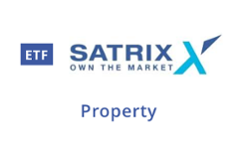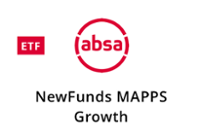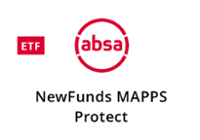Intellidex Reviews for August 2018
ETFs remained largely flat in July with an equally weighted portfolio of the 64 ETFs that we cover marginally losing 0.43%. However, the one-year performance to end-July remained positive, up 4.5%. Local-asset ETFs gained marginally, rising 0.64%, in tandem with mixed economic data, while the international ones were negative, losing 2.23%, as the rand recovered some of its June losses. The rand was buttressed by China’s plans to invest about $15bn in SA while Eskom secured a R33bn loan from the China Development Bank.
The local view
Overall, the star performers were the Satrix Fini 15 (up 6.5%) and Coreshares S&P SA Dividend Aristocrats (up 5.9%). Noticeable weaknesses emanated from the property sector with the Coreshares Proptrax Ten and Satrix Property both declining by 1.8%. The top 40 index – the universe for most of local equity ETFs – retreated 0.33%. However, the Satrix Quality, Satrix Rafi and Coreshares Top 40 Equally Weighted funds showed relatively better metrics among the broad-based funds, edging up 3.3%, 2.1% and 2.4% respectively.
The international view:
Except for the Sygnia/Itrix FTSE 100 which rose 3.7%, all international ETFs listed on the JSE ended July in the red. Global bond funds were the worst performers. Ashburton World Govt Bond and FirstRand US Dollar Custodian Certificate funds lost 5% and 5.3% respectively. The Coreshares S&P Global Property fund shed 4%.
The US economy is firmly in growth territory despite escalating trade wars with its major trading partners. This has put markets on the edge, but it would seem the opening of the US corporate reporting season had more to do with how the global markets ended in July. Facebook and Netflix were notable disappointments, announcing underwhelming results towards the end of July. In contrast Apple, which reported in the first week of August, breathed life into the markets.
ETFs featured
International:
Satrix MSCI Emerging Markets - Satrix MSCI World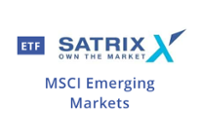 -
-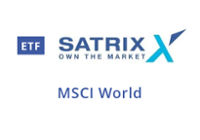
We also split international equities into developed and developing markets:
The international equities offering of the JSE has been expanding. It started off with broad-based themes but has expanded into property funds and, more interestingly, technology funds. Again, our first priority is a broad-based fund. However, technology is a theme that is lacking in our local funds, and given its ever-increasing role in our lives, South African investors ought to gain increased exposure in technology funds to complete their portfolios and enhance sector diversification.
Developed: Our anchor portfolio in the international ETF category is the newer Satrix MSCI World ETF (down 1.84% in July). It displaced the Ashburton Global 1200 (down 1.55% in July) in our last monthly review due to a better expense ratio of 0.35%. The Satrix MSCI fund has exposure in the developed markets of the US, Europe, Japan, Canada and Australia.
Emerging: The choice in this segment is limited to two funds: Satrix MSCI Emerging Markets (down 1.82% in July) and the Cloud Atlas AMI Big50 (down 5.84% in July). Our choice for Satrix MSCI Emerging Markets is motivated by its diversification. The fund provides exposure to high-growth economies such as China and India, which are not included in any of the developed market funds, thus offering further diversification. The Satrix MSCI Emerging Markets ETF with a TER of 0.4% tracks the MSCI Emerging Markets Investable Markets index, which captures companies across 23 countries. The Cloud Atlas AMI Big50 fund has a higher TER of 0.75%.
Domestic:
Local equities have various themes including: broad-based, sector, and smart beta. However, our goal is to build a well-diversified and broad-based portfolio. The other themes can be introduced in a core-satellite portfolio. Satrix SA Quality remains our top choice and it was the best performer among broad-based ETFs in July, growing 3.33%. However, investors should be aware that equities are long-term investments because they exhibit higher volatility than cash and bonds.
Bonds and Cash:
NewFunds TRACI 3 Month - Satrix ILBI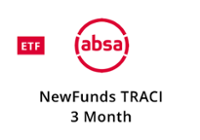 -
- 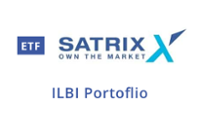
Short term pick (less than a year): NewFunds TRACI 3 Month - it a natural choice because it is least sensitive to sudden adverse interest rate movements. It is similar to earning interest on your cash at the bank with a minimal possibility of capital loss.
Long-term pick: Satrix ILBI ETF - for a longer investment horizon, protecting your investment against inflation is paramount.
In addition to the local bond ETFs, investors now have an option to choose from foreign bond ETFs on the JSE: Stanlib Global Bond ETF, Ashburton World Government Bond ETF and the FirstRand Dollar Custodian Certificate ETF. Of the three we are undecided between the Stanlib Global Bond ETF and Ashburton World Government Bond ETF. Both are feeder funds that track the performance of fixed-rate, local currency, investment-grade sovereign bonds. These are mostly issued by the US, UK Japan, and selected European countries. Their TERs differ by just 0.05 percentage points with the Stanlib Global Bond ETF being the cheapest.
Dividend:
If you rely on your investment income for day-to-day expenses you may want to allocate a portion of your portfolio to ETFs that have a high distribution ratio. Naturally, Satrix Dividend Plus and CoreShares S&P South Africa Dividend Aristocrats come to mind here, but similarly, property funds are high dividend payers. We maintain our choice of the capped fund Satrix Property ETF (down 1.76% in July), with the lowest expected TER in the segment. However, investors with a stomach for exchange rate volatility can consider foreign property ETFs. The Sygnia Itrix Global Property ETF (down 3.9% in July), with a TER of 0.25%, is by far the cheapest of the three.
Multi-Asset:
NewFunds Mapps Growth - NewFunds Mapps Protect
If you find the process of diversifying your portfolio daunting, these two ETFs do it for you. They combine equities and bonds to produce a diversified portfolio for two investor archetypes. They are designed to meet two different risk appetites:
Mapps Protect is more conservative, suitable for conservative, usually older, savers.
Mapps Growth suits investors with a long-term horizon.
Mapps Growth and Mapps Protected grew 0.46% and 0.28% respectively during July.
We've only revealed the tip of this insightful iceberg.
You will want to read up more on Intellidex's insights on international-themed ETFs, including a tid-bit about Apple, as well as more in-depth market summaries, investment strategies, graphs, and August 2018 picks here.
Background: Exchange-traded funds (ETFs)
Exchange-traded funds (ETFs) are passively managed investment funds that track the performance of a basket of pre-determined assets. They are traded the same way as shares and the main difference is that whereas one share gives exposure to one company, an ETF gives exposure to numerous companies in a single transaction. ETFs can be traded through your broker in the same way as shares, say, on the EasyEquities platform. In addition, they qualify for the tax-free savings account, where both capital and income gains accumulate tax free.
Benefits of ETFs
- Gain instant exposure to various underlying shares or bonds in one transaction
- They diversify risk because a single ETF holds various shares
- They are cost-effective
- They are liquid – it is usually easy to find a buyer or seller and they trade just like shares
- High transparency through daily published index constituents
If you thought this blog was interesting, you should also read:
Intellidex Reviews:
July 2018 Picks
Disclaimer
This research report was issued by Intellidex (Pty) Ltd. Intellidex aims to deliver impartial and objective assessments of securities, companies or other subjects. This document is issued for information purposes only and is not an offer to purchase or sell investments or related financial instruments. Individuals should undertake their own analysis and/or seek professional advice based on their specific needs before purchasing or selling investments. The information contained in this report is based on sources that Intellidex believes to be reliable, but Intellidex makes no representations or warranties regarding the completeness, accuracy or reliability of any information, facts, estimates, forecasts or opinions contained in this document. The information, opinions, estimates, assumptions, target prices and forecasts could change at any time without prior notice. Intellidex is under no obligation to inform any recipient of this document of any such changes. Intellidex, its directors, officers, staff, agents or associates shall have no liability for any loss or damage of any nature arising from the use of this document.
Remuneration
The opinions or recommendations contained in this report represent the true views of the analyst(s) responsible for preparing the report. The analyst’s remuneration is not affected by the opinions or recommendations contained in this report, although his/her remuneration may be affected by the overall quality of their research, feedback from clients and the financial performance of Intellidex (Pty) Ltd.
Intellidex staff may hold positions in financial instruments or derivatives thereof which are discussed in this document. Trades by staff are subject to Intellidex’s code of conduct which can be obtained by emailing mail@intellidex.coza.
Intellidex may also have, or be seeking to have, a consulting or other professional relationship with the companies mentioned in this report.
Subscribe To Our Research Portal
Search all research
Let Us Help You, Help Yourself
From how-to’s to whos-whos you’ll find a bunch of interesting and helpful stuff in our collection of videos. Our knowledge base is jam packed with answers to all the questions you can think of.

